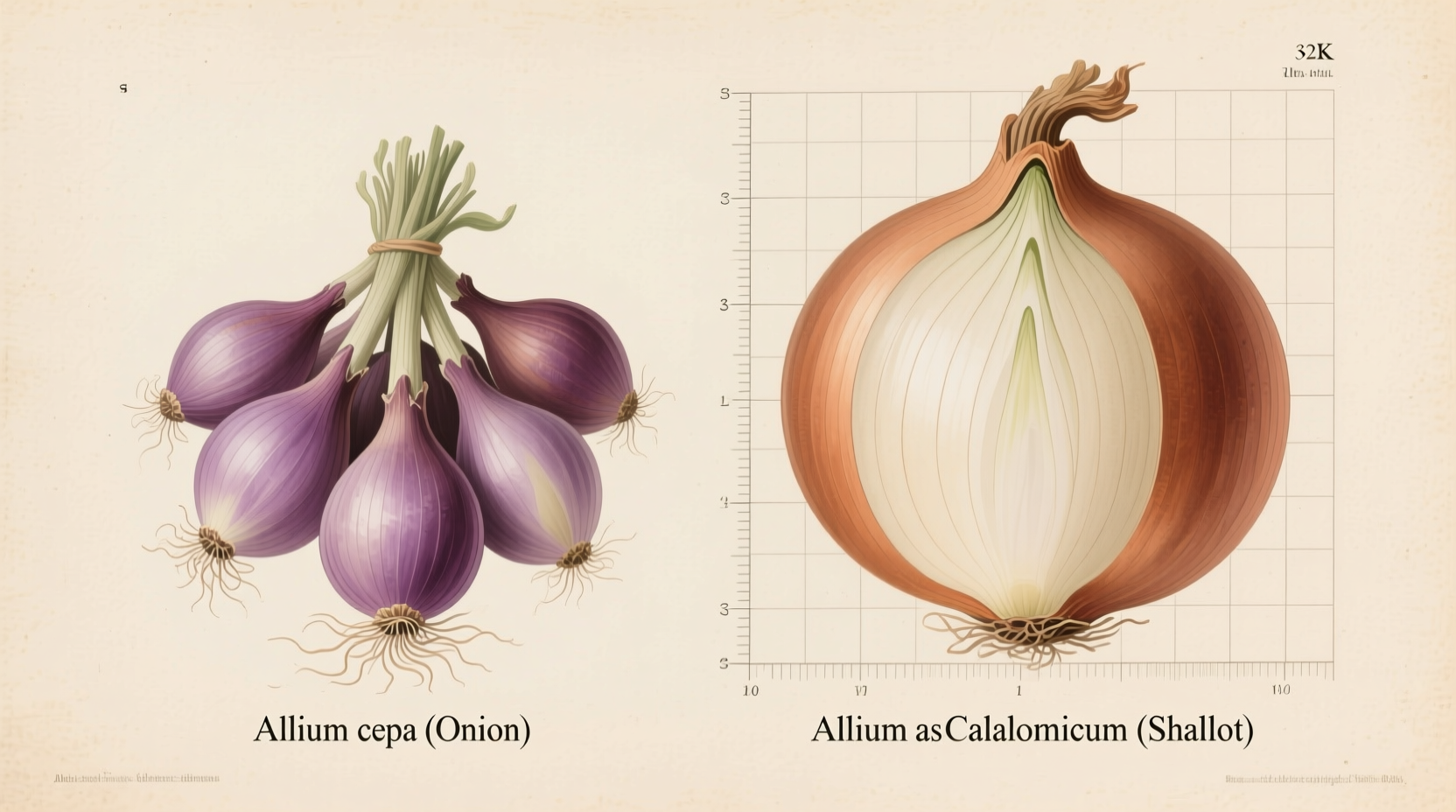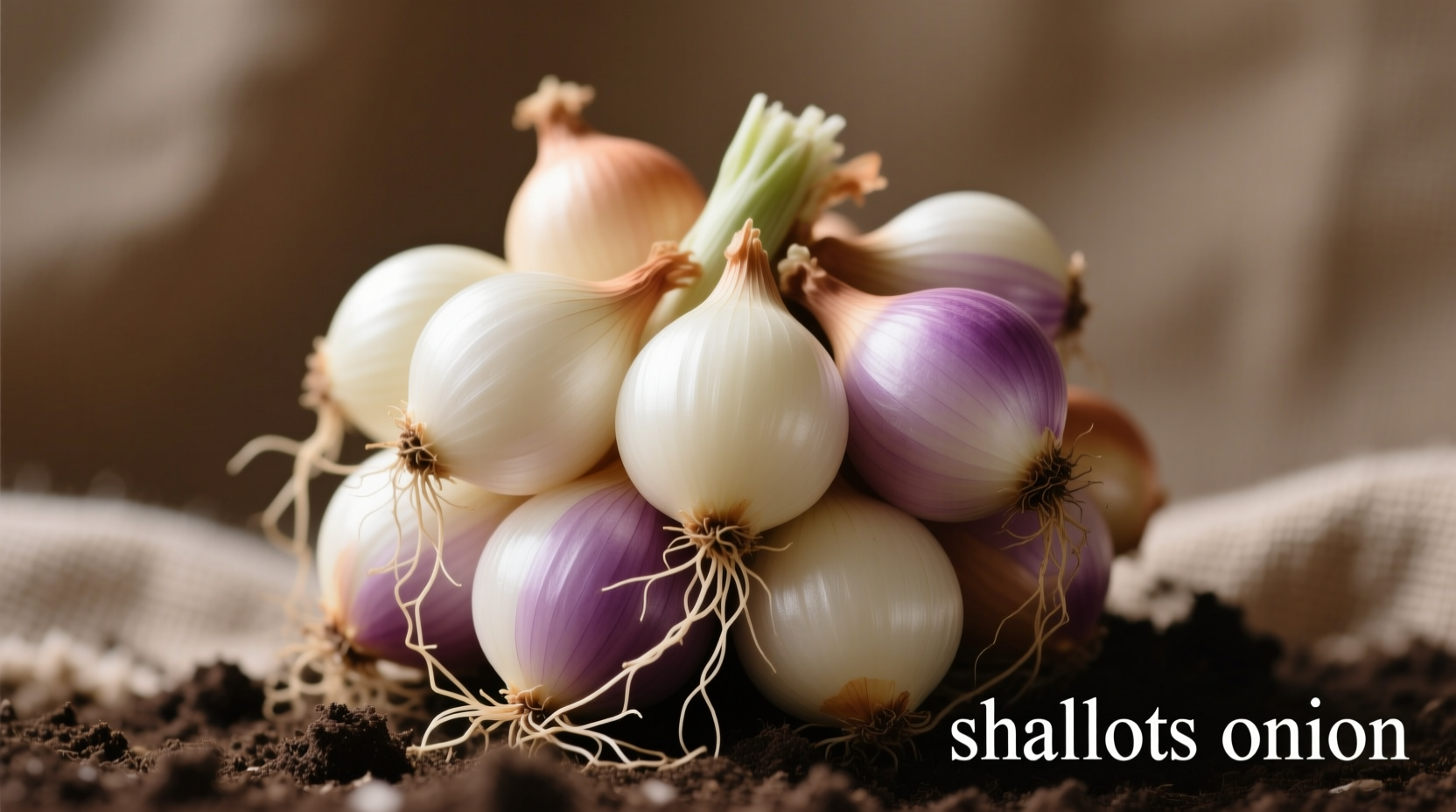As a French-trained chef who's spent years exploring European culinary traditions, I've seen how the simple choice between shallots and onions can make or break a dish. Many home cooks treat them as interchangeable, but understanding their unique characteristics transforms your cooking from good to exceptional. Let's explore exactly when and why you should reach for each allium.
Botanical Background: More Than Just Different Names
Though both members of the Allium genus, shallots (Allium cepa var. aggregatum) and common onions (Allium cepa) have distinct biological structures. Shallots grow in clusters with multiple cloves like garlic, while onions develop as single bulbs. This fundamental difference affects everything from flavor concentration to cooking behavior.

Flavor Profile Comparison: Understanding the Taste Difference
The most crucial distinction lies in their flavor chemistry. Shallots contain different proportions of sulfur compounds than onions, resulting in a more nuanced taste experience. When raw, shallots offer a gentle heat with subtle garlic-like notes, while onions deliver a sharper, more aggressive bite. When cooked, shallots mellow into a sweet complexity that enhances delicate sauces without overwhelming other ingredients.
| Characteristic | Shallots | Common Onions |
|---|---|---|
| Flavor intensity (raw) | Mild, sweet with subtle garlic notes | Sharp, pungent, more aggressive |
| Flavor when cooked | Complex sweetness, caramelizes beautifully | Bold flavor, can dominate dishes |
| Sugar content | Higher natural sugars | Lower natural sugars |
| Best for raw applications | Vinaigrettes, salsas, garnishes | Ceviche, onion rings, Bloody Marys |
| Storage life | 1-2 months in cool, dark place | 1-3 months depending on variety |
When to Choose Shallots: Precision Applications
Professional kitchens reach for shallots when precision matters most. Their delicate flavor shines in applications where you want allium presence without overwhelming other ingredients:
- Classic French sauces – Shallots form the foundation of beurre blanc, demi-glace, and other delicate sauces where onion would be too harsh
- Vinaigrettes and dressings – Their milder bite integrates seamlessly without dominating the dressing
- Seafood dishes – Pair beautifully with fish and shellfish without competing with delicate flavors
- Finishing applications – Thinly sliced raw shallots add sophistication to finished dishes
When Onions Excel: Bold Flavor Foundations
Common onions bring necessary strength to dishes that require robust allium presence:
- Hearty stews and braises – Their stronger flavor holds up through long cooking times
- Soups with bold profiles – French onion soup demands the characteristic bite of yellow onions
- Pickling applications – Red onions provide both flavor and vibrant color
- Grilled or roasted preparations – Larger size makes them practical for these applications
Substitution Guidelines: Making Smart Swaps
When substituting between these alliums, understanding the flavor intensity ratio is crucial. Based on sensory analysis from the Culinary Institute of America's flavor laboratory, shallots are approximately 60% as intense as yellow onions when raw and 50% as intense when cooked.
Use these practical substitution ratios:
- For every 1 shallot, use 1⁄₂ small yellow onion
- For every 1 cup chopped shallots, use 3⁄₄ cup chopped yellow onion
- When substituting onions for shallots in raw applications, soak chopped onions in cold water for 10 minutes to reduce sharpness
Avoiding Common Mistakes
Even experienced cooks make these allium errors:
- Using the wrong variety for the application – Shallots in French onion soup creates an unbalanced flavor profile
- Incorrect substitution ratios – Using equal amounts leads to either overpowering or underwhelming results
- Poor storage practices – Storing shallots in the refrigerator causes them to deteriorate faster than at room temperature
- Overcooking delicate shallots – They caramelize faster than onions and can burn if not monitored closely
Professional Preparation Techniques
How you prepare these alliums affects their final flavor. For shallots, peel by trimming ends, scoring the root end, and soaking in warm water for 2 minutes—this loosens the skins for easy removal. When slicing for raw applications, cut against the grain to minimize harsh compounds.
For onions, chilling before cutting reduces tear-inducing compounds. Always cut with the grain (from root to stem) for structural integrity in cooked dishes, or against the grain for quicker flavor release in sauces.











 浙公网安备
33010002000092号
浙公网安备
33010002000092号 浙B2-20120091-4
浙B2-20120091-4